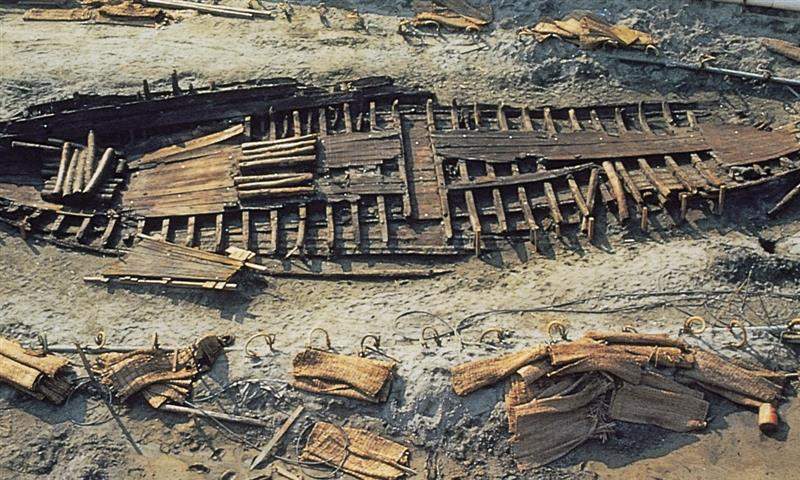The case of the Roman ships of Comacchio and Ravenna, two vessels dating one from the first century B.C. and the other from the fifth century A.D., is back in the news: the older one was discovered in 1980 during drainage work on a reclamation canal near Comacchio. It was a cargo ship, used to transport a wide variety of materials (lumber, metal, art objects), and wrecked near the mouth of the Po River. The more recent one, also known as the “ship of Theodoric” (as it dates back to the time of the king of the Ostrogoths), was discovered in 1998 (in Ravenna) during excavations for the construction of a drainage system: in this case it is a vessel of paramount importance because, according to scholars, it represents one of the oldest (if not the oldest) evidence of the change in ship-building technique where the hull is made of load-bearing skeleton.
However, despite the fact that the ships have been discovered for decades, they are still not accessible to the public: in fact, there is a lack of funding to restore and exhibit them, despite the fact that cyclically their case comes back to the forefront, and always for the same reasons. The latest developments date back to 2018, when news came of an allocation from the Ministry of Cultural Heritage for the restoration of the oldest ship, while the fate of the one from Ravenna was uncertain, which was nevertheless stored in a laboratory in Comacchio awaiting restoration. And in any case, there were no developments on the 1st century B.C. ship either.
The issue of Roman ships is now being brought to parliament by Bologna Senator Michela Montevecchi (5 Star Movement), who is launching a parliamentary question to Cultural Heritage Minister Dario Franceschini. “To date,” Montevecchi recalls, the two Roman ships, “the discovery of which has inestimable archaeological and cultural value, are neither accessible nor visible to the public because due to lack of funds the restoration could not be completed. Given the importance of the find, the Mibact allocated in 2014 a funding of 75 thousand euros. Then nothing more. After the initial enthusiasm it would seem that nothing more has been done either for the recovery of the ships or for the enhancement of the archaeological area where they were found. On the contrary, one of the two ships has been buried again at the site of Santa Maria in Padotevere (Comacchio) to prevent its deterioration while the other lies closed and inaccessible in the Museo Delta Antico.”
Montevecchi therefore asks Franceschini if he is informed about the developments of the situation (the minister, according to the senator, is familiar with the ships’ affair since “he himself held the department in 2014”) and if he does not consider it appropriate to investigate the causes of the failure to restore and the interruption of the excavations.
Pictured is the Comacchio ship.
 |
| The case of the Roman ships of Comacchio and Ravenna arrives in Parliament, a forgotten treasure due to lack of funds |
Warning: the translation into English of the original Italian article was created using automatic tools. We undertake to review all articles, but we do not guarantee the total absence of inaccuracies in the translation due to the program. You can find the original by clicking on the ITA button. If you find any mistake,please contact us.